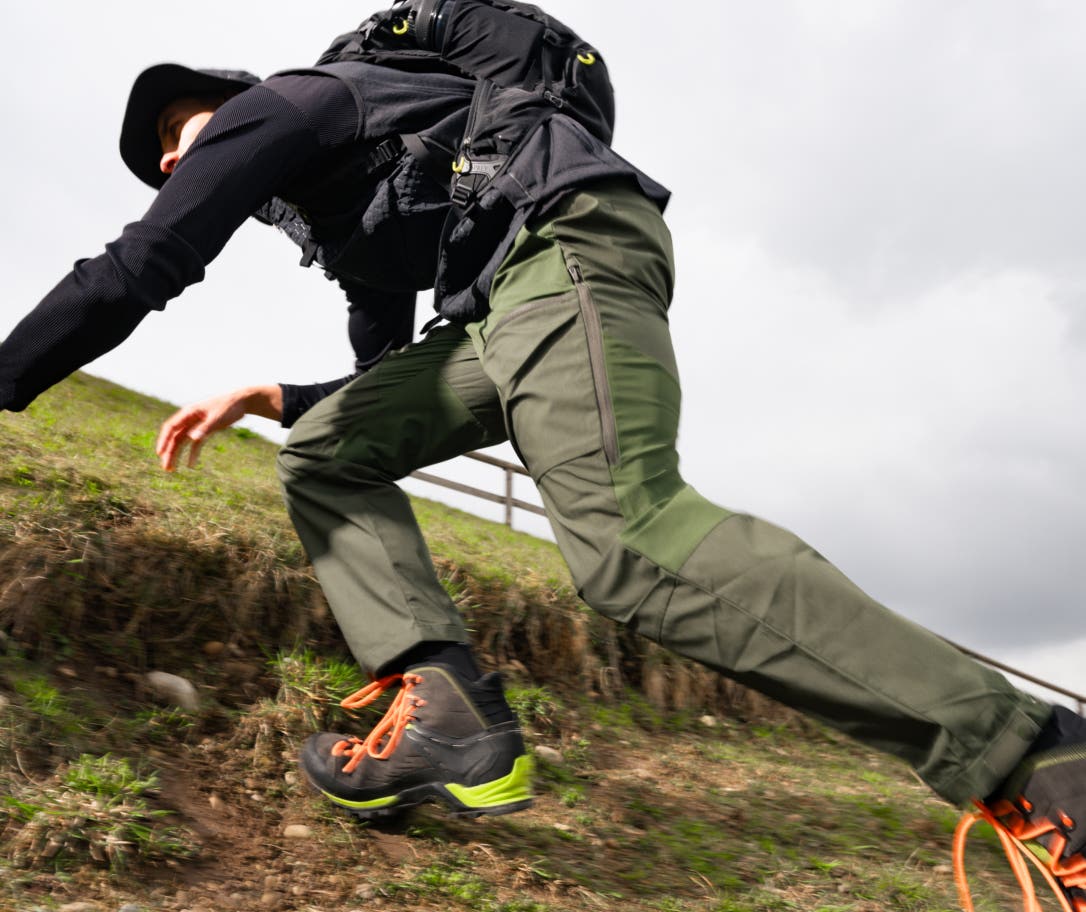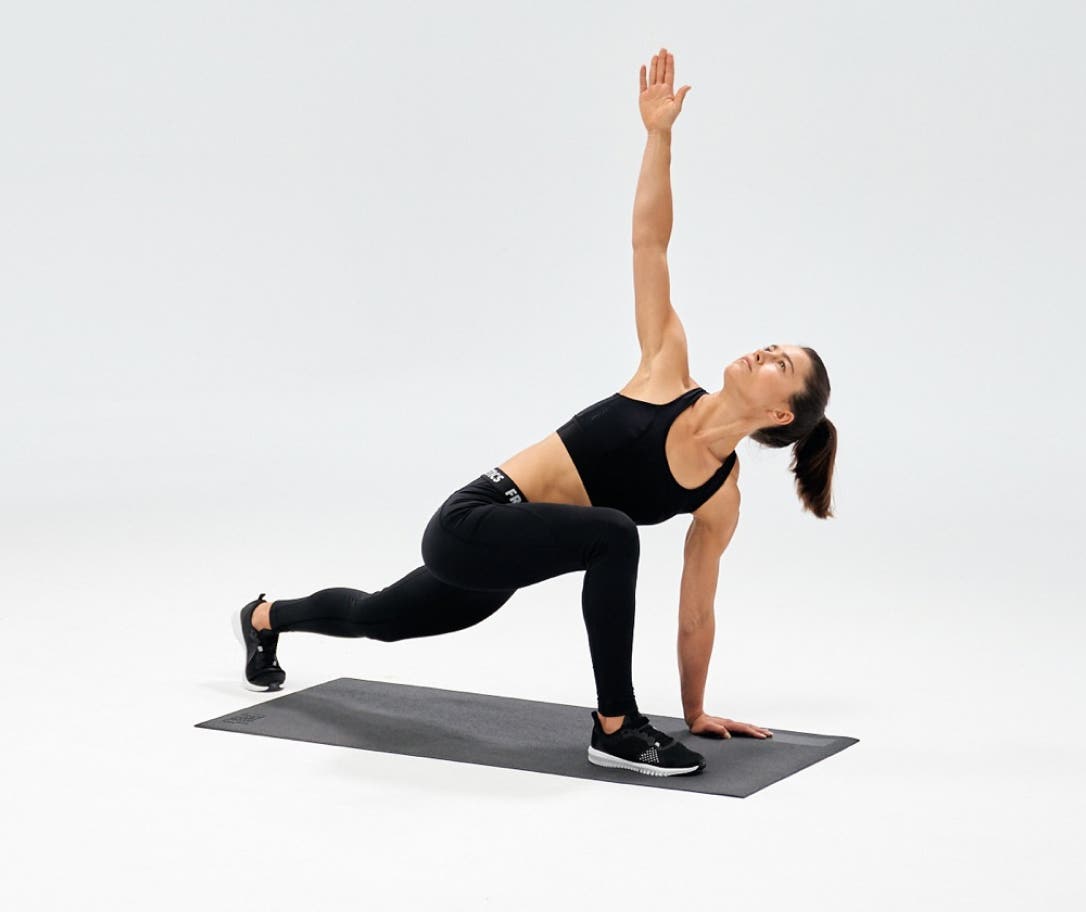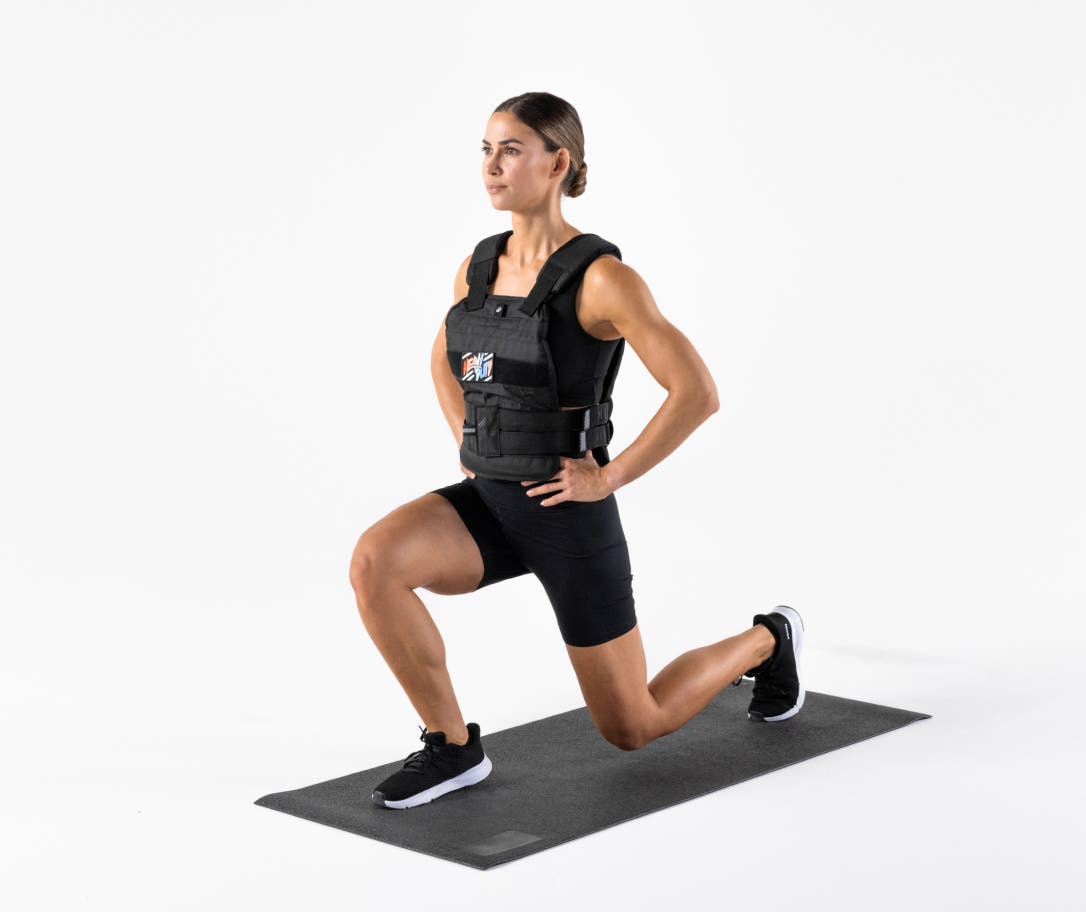Hiking is a deeply rewarding way to explore the outdoors, but it’s also physically demanding.
Whether you’re tackling short day hikes or multi-day backcountry adventures, the trail can take a serious toll on your body. Uneven terrain, steep climbs, and long hours on your feet require a unique blend of endurance, strength, mobility, and mental resilience.
Preparing for the season with the right training routine can make your hikes more enjoyable, reduce your risk of injury, and help you feel strong and confident on every step of the trail.
By targeting specific areas like cardiovascular endurance, lower body strength, stability, and hiking-specific skills, you can enter the hiking season with a solid foundation for success.
What is hiking?
At its core, hiking is a form of walking – sometimes for leisure, sometimes for challenge – usually done on trails or in natural environments. It can range from flat, easy strolls through forest paths to grueling ascents over rocky terrain.
The versatility of hiking means it's accessible to people of different fitness levels, but the physical and mental demands increase with the intensity and duration of the hike.
While it might seem like just walking, hiking incorporates far more complex movement patterns and physical demands, especially when you add elevation gain, pack weight, and environmental challenges into the mix.

The physical components of hiking
Cardiovascular endurance
Hiking, particularly on steep inclines or for long durations, is a cardiovascular workout. A strong aerobic base allows you to maintain energy on longer hikes and recover faster from uphill climbs. Cardio training enhances your lung capacity and helps you manage your heart rate more efficiently.1
Example exercises
Brisk walking or jogging: Simple and accessible, walking or jogging 3-5 times per week can gradually improve endurance.
Cycling: A low-impact way to build stamina and leg strength, especially helpful for cross-training.
Bodyweight HIIT routines: Quick, intense bursts of work mixed with rest periods to improve cardiovascular capacity and muscular endurance at the same time.
Strength
Strength training builds muscle endurance and improves your ability to power up climbs, navigate descents, and support your joints under repetitive stress.2 It’s also crucial for carrying your gear and your body weight while handling the uneven nature of the trail.
Focus areas and exercises
Lower body strength: Strong leg muscles, such as your glutes, hamstrings, quads, and calves, are key for tackling inclines and supporting your joints.
- Squats and Lunges: Great for building foundational strength in multiple muscle groups.
- Box Step Ups: Mimic the climbing motion used in hiking.
- Calf Raises: Help with push-off power and ankle stability.
Unilateral work: Training one side at a time (e.g., single-leg exercises) builds balance and corrects strength imbalances that can lead to injury.

Stability and balance
Trails are unpredictable. With every step over rocks, roots, and narrow paths, you need to be able to adapt your footing and stay upright, even when the ground is uneven or shifting.3 Your body must stabilize itself. Core strength and joint stability can help you react to unexpected shifts and prevent falls or injuries.
Example exercises
Single Leg Deadlifts: Strengthen your glutes and hamstrings while challenging your balance.
Shoulder Bridge Leg Raises: Activate stabilizing muscles and support pelvic alignment.
Joint mobility
A good range of motion in your hips, ankles, and knees is critical for navigating varied terrain efficiently. Mobility allows your body to move efficiently through a full range of motion, helping you take longer, more confident strides and preventing overuse injuries.
Two key areas to focus on are the hips and thoracic spine. These areas often get stiff from sitting or daily routines but are crucial for hiking. Good hip mobility allows for more efficient strides when climbing, while a mobile upper back helps distribute pack weight evenly and maintain upright posture on long treks.
Example exercises
Foot and ankle strengthening: Toe yoga, banded ankle inversion, and balance drills help create a solid foundation.
Dynamic stretches: Leg Swings, Hip Circles, and Walking Lunges prepare your joints for the trail.
Foam rolling and flexibility work: Regular mobility sessions reduce stiffness and improve tissue quality.
Adding mobility flows into your exercise program with spinal twists like the World’s Greatest Stretch or hip-focused moves like Hip Circles with controlled breathing can open up these areas and reduce fatigue on the trail.

Mental strength
Endurance sports like hiking demand mental resilience. Whether you're pushing through fatigue, weathering tough terrain, or navigating uncertainties, mental toughness helps keep you going.
Proprioception
One often-overlooked demand of hiking is proprioception – the body’s ability to sense its position in space.
When you’re navigating uneven terrain, stepping over roots, or balancing on rocks, your body constantly makes micro-adjustments to stay upright and avoid injury.
Developing better proprioception through targeted training improves your trail awareness and confidence, especially in technical sections of a hike. It also helps you recover quickly from missteps and reduce the risk of ankle rolls or slips.
Hiking-specific skills to focus on
Getting in your aerobic exercise, strength training exercises, and mobility are just one part of the puzzle. Being truly trail-ready also involves preparing for the real-world demands of hiking that challenge even well-conditioned athletes.
Practice with a heavy backpack
If you’re planning longer hikes, your pack could weigh 8-15 kgs or more. Training with added weight – either a loaded pack or a weighted vest – helps your muscles adapt to carrying extra load and improves posture under stress.
Breath work for altitude
High altitude (like in Colorado, where I am currently writing this article) requires strong, efficient breathing. Practicing deep belly breathing and controlled exhales can help keep your breath steady and reduce the effects of altitude fatigue.
Fueling strategies
Long treks require more calories than you might expect. Practice fueling with snacks and hydration during training hikes or longer cardio-based training sessions so your body gets used to digesting on the move.
Footwear and gear familiarity
Break in your hiking boots ahead of time and wear them during training. Knowing how your gear fits and functions helps you avoid discomfort or blisters when it counts most.
Trail simulation
Whenever possible, mimic real hiking scenarios: walk on trails, tackle hills, climb stairs, and expose your body to natural conditions like variable terrain, weather, and elevation.
Another helpful strategy is to gradually increase the distance and elevation of your training hikes. This progressive overload mimics the way you’d train for a running race or cycling event.
It gives your body time to adapt to the physical and metabolic demands of longer hikes while also helping you dial in gear choices, hydration needs, and pacing strategies.
Starting with shorter trails and working your way up to full-day or multi-day hikes can prevent overuse injuries and build mental confidence to keep you on the trails long-term.

Let’s recap
Getting ready for hiking season takes more than enthusiasm – it takes targeted, thoughtful training. By focusing on cardiovascular endurance, building strength (especially in the lower body), improving stability and balance, mobility, and honing in on your hiking-specific skills like pack training and breath work, you’ll not only feel better on the trail – you’ll also hike stronger and safer.
This kind of preparation enhances your overall athletic performance, reduces injury risk, and makes hiking more enjoyable. Whether you're new to the trails or a seasoned trekker, now is the perfect time to start building your hiking fitness.
So what’s next? Commit to a training routine that supports your hiking goals. Start small, stay consistent, and make each workout count toward a stronger, more confident season in the mountains.
Sources
[1] Baggish, A. L., & Ackerman, M. J. (2011). Hiking for fitness: A guide to a healthier lifestyle. Trail Press.
[2] Kraemer, W. J., & Fleck, S. J. (2005). Strength training for young athletes. Human Kinetics.
[3] Schubert, M., & Stethem, L. (2007). Balance and stability training for hikers: Reducing the risk of falls and injuries on uneven terrain. Journal of Outdoor Recreation and Education, 2(1), 45–52.